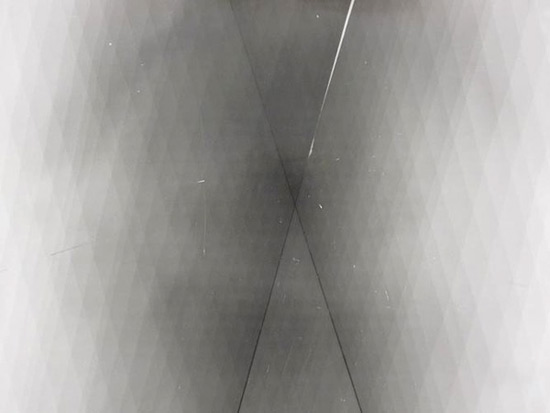While having the potential to come off as a bit of a Debbie Downer, Roberta Smith contributes seasoned wisdom with traditionalist tones in this weekend’s NY Times Arts & Leisure section.
The title, Post-Minimal to the Max, is odd and misleading, so I suggest disregarding it, but the writing nicely frames the current art moment as a scaled-up rehash of themes from 70’s Conceptualism. Smith begins with a roll call of recent New York museum exhibitions (Gabriel Orozco, Urs Fischer, Tino Sehgal) and briefly laments the season’s menu as “dispiritingly one-note.” While a fan of these shows, she fears that they represent the congealing of another chapter of institutionally approved Art History (a behavior she later insists that we now know too much to repeat). While we all have our own preferences, and Smith is no exception, the article is not a critique of one vision in favor of another, but rather a concerned observation of the lack of variety in the shows that are currently on view. Absent, she notes, is an interest in the personal, and the urgently hand-made. Following this, is a reading of where we’re at, based on what’s missing. But like a doctor telling us that we need more fiber, what’s being advocated is not fiber, but a balanced diet overall.
“We cannot live by the de-materialization — or the slick re-materialization — of the art object alone.”
After all, variety is good for the art wold for the same reason that it makes for healthier DNA: regular exposure to the unfamiliar allows us to keep growing as a whole. The idea here is not that the Art world is based on the survival of the fittest (much as it can often feel that way), but rather that a diversity of visions is crucial to our understanding of the present, and also makes for a more interesting conversation. Imploring curators (the real audience of this article) to think outside of the ‘hivemind,’ she invites a larger conversation about our continued obsession with newness, nowness, and brand names. Although referring to a beehive, this potent little term also calls to mind the frenzied buzz of Wall Street, where information pertaining to the patterns of the collective are studied in order that individuals may profit from it. But whether you are a broker or a bee, your business is a working knowledge of the thing in demand, not the thing that nobody is talking about. This tendency of market economies to seek out and define a normative goal leads directly the condition that Smith writes about: a kind of aesthetic myopia where all we want to see is what is getting seen the most. This model can also be seen in everything from viral videos on the internet, to the use of algorithms developed in the financial sector to analyze (and exploit) trends in the Art market.
What gives the article its call-to-reason tone is the nature of the moment from which Smith is attempting to right our ship. Her argument is reminiscent of one recently put forth by the White House, attributing the success of Fox News to the simple fact that it is selling the clearest narrative for people to follow. So too in the Art world do we want clarity, and the more others are following something, the less likely will it be a waste of our time to do the same; at least we will have something to say when it comes up in conversation. Here Smith’s article rightly reminds us that the aim of the Arts was never for all of us perceive the same reality. We look for alternative ways of looking, or at least that’s why I got into this racket.
If, as Don Draper says, Happiness is a billboard on the side of the road that screams with reassurance that ‘Whatever you’re doing is OK,’ then surely nothing is more annoying than a Times critic who cries for a return to common sense. It is a risky position to take, as such a plea can easily make people feel judged for the fun they are having. To me it sounds like good advice though, for those in the Art world looking to move past the values inherited during the last decade’s proximity to the market.



 RSS
RSS
